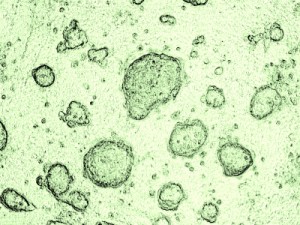What Are Stem Cells?
On February 9, 2016, the journal Cell Reports published a study looking at the association between autism risk genes, metabolic disorders, and neural stem cells. Explore the following pages to learn all about stem cells and their role in autism research.

The human body is composed of trillions of cells (that’s millions of millions), many of which perform highly specialized functions. For example, your brain is made up of a type of cell called neurons. These brain cells develop specializations that allow them to transmit information throughout the body.
All of the specialized cells in the human body develop from a small cluster of cells formed shortly after an egg is fertilized. Each cell in this cluster, called the inner cell mass, has the ability to turn into each and every specialized type of cell in the human body. The ability of a cell to turn into many different specialized types is called pluripotency. As we’ll see, these pluripotent cells are used as a source of embryonic stem cells (collected from embryos generated in fertilization clinics).
Over the course of fetal development, as the specialized tissues and organs of a human are formed, small numbers of stem cells are retained within these tissues and organs as a future source of tissue-specific specialized cell types; these stem cells are called adult stem cells.
All stem cells are characterized by three properties:
- Stem cells are capable of self-renewal, which means that they can divide and replicate for long periods of time.
- Stem cells are unspecialized cells, meaning that a stem cell lacks the tissue-specific structures that would allow it to perform specialized functions. For example, a stem cell cannot transmit signals like a neuron.
- Stem cells can give rise, or differentiate, into specialized somatic cells.

